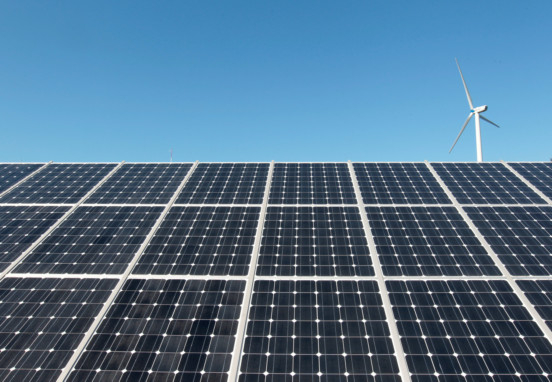
When Saudi Arabia launched its Vision 2030 earlier this year, the solar industry, almost collectively, took notice. As any industry veteran will tell you, Saudi Arabia was always spoken of in speculative terms at conferences, and in private.
Vision 2030 — with its initial goal of delivering 9.5 gigawatts (GW) of solar power — has effectively changed that.
To say that Saudi Arabia has the potential to emerge as a solar energy powerhouse, is no longer speculation.
What makes Vision 2030 and the King Salman Renewable Energy Initiative different from previous programmes announced by the country, is that they represent the highest level of commitment to renewable energy ever seen in the Kingdom.
The “initial” target suggests that the country will grow its renewable energy capacity in increments, taking advantage of future cost declines and efficiency improvements, while also leaving the door open for emerging technologies.
Competitiveness
Many observers also point to the fact that Vision 2030 commits to guaranteeing “the competitiveness of renewable energy through the gradual liberalisation of the fuel market”.
This is clear evidence that the government fully intends to deliver on its renewable energy goals.
Subsidies for conventional fuels tend to hinder the adoption of renewables in many net-energy exporting countries, for the simple reason that renewables simply cannot compete on an uneven playing field where subsidised oil is fuelling domestic power generation.
By liberalising the fuel market, Saudi Arabia will effectively grant renewable energy technologies a level playing field on which to successfully compete against conventional energy generation, as they currently do in other markets.
And as the industry awaits the launch of the King Salman Renewable Energy Initiative and the tangible timelines to go with it, the Kingdom would do well to take three steps to avoid the pitfalls that other fast-emerging markets have faced, in order to reach its goals.
Approaches
First, Saudi Arabia should consider taking a consultative approach while developing its renewable energy policy framework by leaning on capable, credible industry partners to share their expertise. This will help the country avoid the steep learning curve that others have sometimes stumbled down from.
A rapidly ramped-up renewable energy strategy comes with its own regulatory, economic and technical challenges and there are a number of case studies from around the world that demonstrate how things must — or, conversely, mustn’t — be done.
Second, the Kingdom should consider diversifying its renewable energy portfolio with provisions for application-focused commercial and industrial (C&I) projects. For instance, it could go above and beyond establishing a utility-focused solar programme and provide long-term solar energy targets for certain, energy-intensive industrial sectors such as agriculture, cement, steel and petrochemical manufacturing.
Encouraging some of the country’s heaviest consumers of electricity to invest in offsetting their energy needs with solar power, will deliver the immediate benefit of taking the pressure off existing utility-scale power generation assets.
Similarly, the energy-intensive desalination sector could, quite feasibly, move towards the use of Reverse Osmosis technology that can easily be powered by solar photovoltaic (PV) technology. Additionally, the Kingdom’s use of diesel generation in off-grid areas also offers opportunities to introduce hybrid — solar-diesel — applications.
And finally, it will be critical for the authorities overseeing the Initiative to underpin its success by engaging with lenders and financiers. When you consider that the cost of financing still accounts for a large chunk of the Levelised Cost of Electricity, it will be critical for Saudi Arabia to facilitate competitive finance.
In fact, it will be particularly important for banks and lenders based in the Kingdom to better understand the solar energy industry, ensuring that they’re comfortable with providing competitive financing for the programme. Encouraging locally-based lenders to participate also allows the Kingdom to reap broader economic benefits from the programme.
Saudi Arabia is on the cusp of fully embracing its potential to harness its most abundant energy resource — sunlight. A collaborative, multi-pronged strategy can only accelerate its success.
Dr Raed Bkayrat is the vice-president of business development for First Solar in the Middle East.









